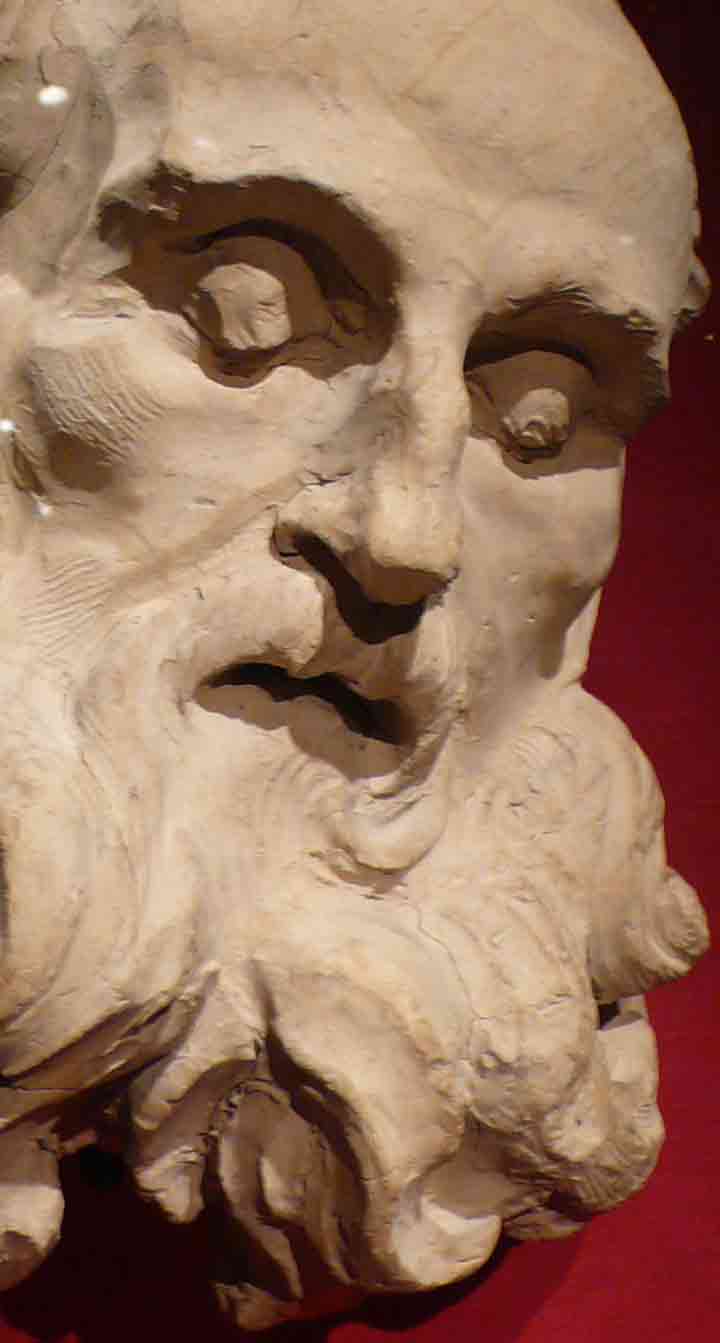I]
Review: "Bernini. Sculpting in Clay." Metropolitan Museum of Art, New York. Through January 6, 2013.
Exhibition catalog available through Powell's, a unionized bookstore.
You might get the wrong idea from the dab of clay on the bridge of the nose of Saint Jerome; that is, on the original clay model built by Bernini for his figure of Jerome as it now stands at the back of Saint Peter's, in Rome. The dab of clay may appear gratuitous, or spontaneous, or private: it's a mere posture of being all three, like the dab of carmine at the center of Velazquez’ Juan de Pareja, painted, also in Rome, a few years before Bernini's Jerome was modeled; but you'd get the wrong idea from the signage, at the Metropolitan Museum of Art, which speaks of "bold, expressive works in their own right" and "creative fervor." Sprezzatura is the name for this Baroque and Mannerist concept of expressiveness and fervor: the catalog for this show does an excellent job of placing Bernini's apparent spontaneity in its social context. Actually, the catalog does an excellent job all around, it devotes over a hundred page to painstakingly precise descriptions of the various gash and slashes and techniques used by Bernini: for instance to the brutal claw-chisel gash across Jerome's left temple. That slash, we're told, is Bernini's own way of indicating negative space through the shadows created by a toothed texture.
Or, take that dab of clay on the bridge of the nose of Saint Jerome: the area where Bernini, with his thumb, has hollowed out the wing of the nose, pushing back from the bridge with his thumb, and slightly twisting its orientation in space. Elsewhere, the catalog describes the way wet clay is "pushed around limbs," very much as it's pushed back along the bridge of Saint Jerome's nose, and for the same purpose: it's how Bernini defines the model in space; and that's only somewhat more obvious with the limbs of figures, because we're told as well how they're detached and twisted throughout the preliminary process of creation to better align them with the yet-imaginary city that will eventually surround them.
Almost every single model in this show is intended for the particular spot in the City of Rome which defines it at inception and which it aims to define after completion. Offhand, I can think of only two works by Bernini that aren't caught in this particular crux: the statue of Verità, which falls flat because it was not a public commission; and the self-portrait, which falls flat because it is flat, it's a two-dimensional object: in this portrait the slurry of shadow that connects the bridge of the nose to the cheek is as weak as the same passage, in the figure of Saint Jerome, is triumphant. Every other work on display in this show radiates outward, it's planned from the outset to define the City. The catalog, being the work of scholars and not activists, focuses on the technical problems of representation and sidesteps to a certain degree Bernini's dialectic of the private and the public, as well as the relationship of Bernini's seemingly individualistic techniques to his ultimate intent, which is to place the figure in a real, lived space, and is therefore social, and political.
II]

And of course, Bernini and his patrons seem to have been successful in creating the lived experience of Rome. Others? Lefebvre was a major, misunderstood influence on the Situationnistes, who fantasized that le vécu could be brought into being by the mere act of living by the proper, self-appointed authority: "Change life! Change Society! These ideas lose completely their meaning without producing an appropriate space... New social relations demand a new space, and vice-versa."
Who would have thought that wiggling your fanny while shouting slogans could change the world? The same people who thought that creating gorgeous sculptures would change Rome, and by changing Rome, save a few more souls. Which still leaves the question, whether Bernini and his patrons did, too, change the City and the World, not to mention Occupy. Which opens in turn the next question, whether Art does, indeed, change the world, or merely change the world by battering the viewer with the belief that it can, and should, and will.
"Whose streets? Our streets!" Easier said than done.
- Paul Werner
[12/01/2012; last revised 2/2/2013]
